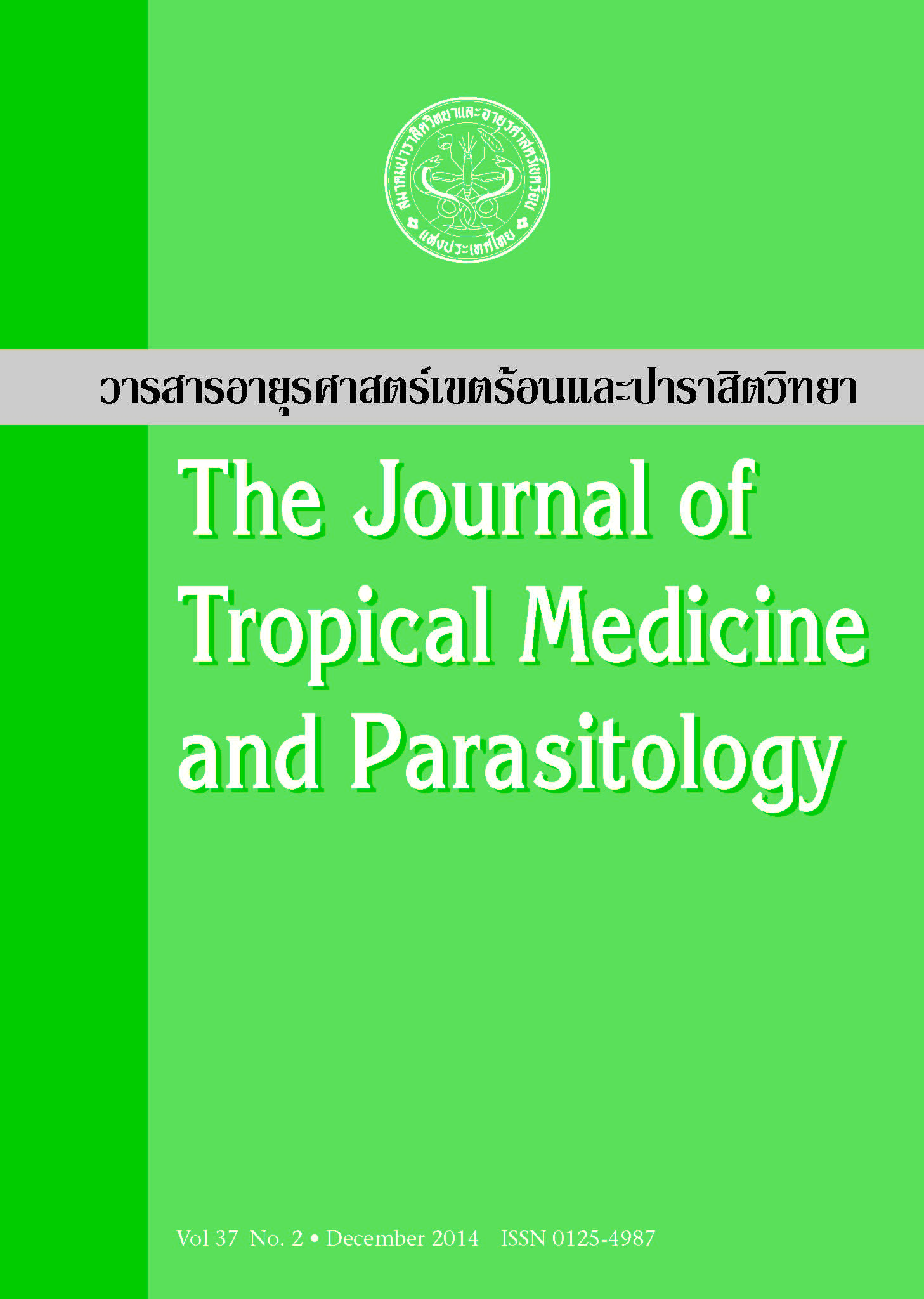Prevalence of hair follicle mites, Demodex folliculorum and Demodex brevis, on the facial skin of Chiang Mai University Students, and the relationship with acne vulgaris
Main Article Content
บทคัดย่อ
The hair follicle mites, Demodex folliculorum and D. brevis are asymptomatic parasites of humans. To date, the genus Demodex has been implicated in the occurrence of many skin diseases. Thus, the main aim of this study was to determine the infestation rate of Demodex spp. in young adults and study the relationship between Demodex density and acne vulgaris. Furthermore, the mean densities of Demodex mites between clindamycin users and a control group were also observed in this study. Studied population consisted of 280 healthy volunteers from Chiang Mai University (age 20-22 years old). Skin samples were collected by a skin scraping technique and were examined for the parasite by direct microscopic examination. Both species were found in the resulting skin samples. The overall prevalence of Demodex mites on the facial skin of Chiang Mai University students was 40.36%. The mite prevalence in males (44.20%) was significantly higher than in female (36.62%) (P = 0.024). Demodex folliculorum had a higher prevalence (31.1%) than D. brevis (26.1%). The mite density in males (0.89 Demodex/cm2) was also significantly higher than in female (0.49 Demodex/cm2) (P = 0.035). We also found that males were approximately twice as likely to have acne vulgaris as females. Although Demodex has been involved in the etiology of many skin diseases, the parasite does not appear to be related to acne vulgaris in young adults (P = 0.313). Thus, the eradication of Demodex mites is not necessary for the therapeutic treatment of acne vulgaris. The mites were found on all facial sites, the highest density being in the area of the nose followed by the forehead and cheeks, but there was no significant difference among these 3 areas. This study also determined the effect of clindamycin on Demodex mites. The results revealed that the use of clindamycin was not related to the density of Demodex mites. However, additional sample sizes for the clindamycin study are needed.

